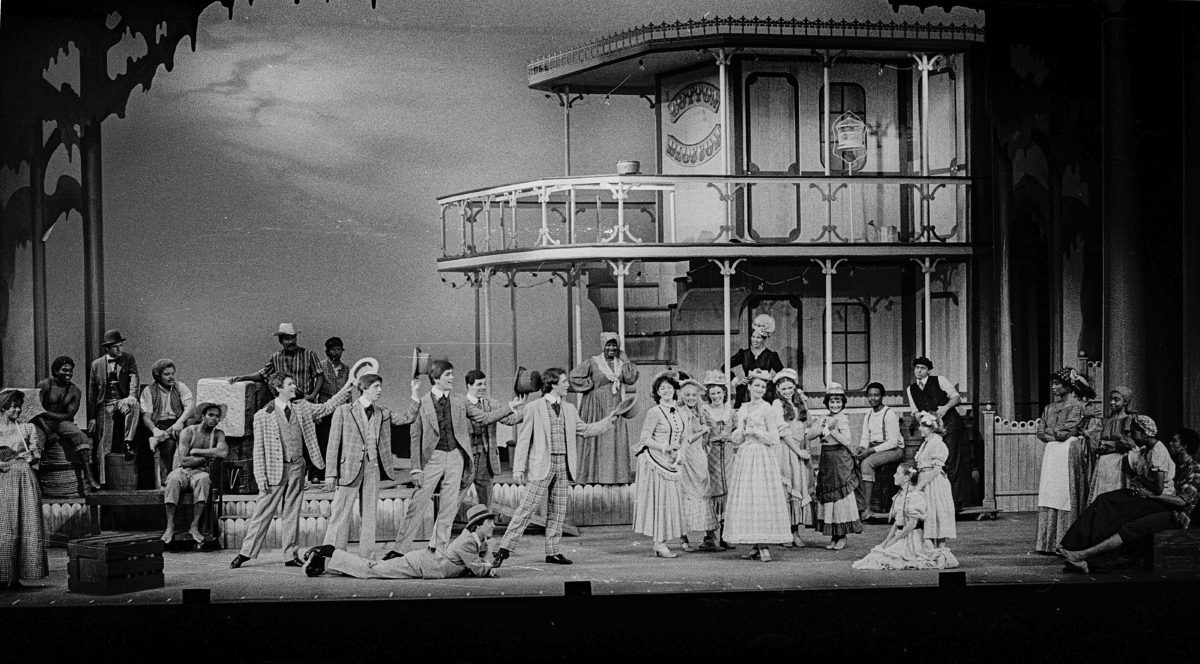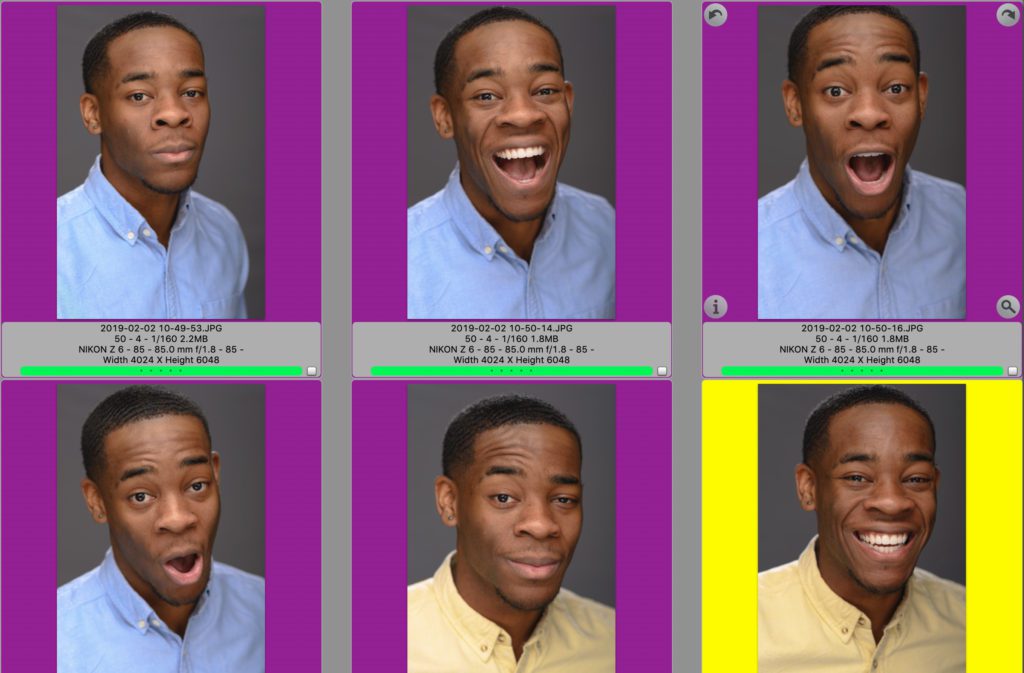The photo above is from the photo call for Show Boat performance at East Carolina to open the new theater on April 3, 1982. The camera I shot that on was a Nikon FM2. I would have been using Kodak Tri-X film pushed to ISO 1600. The shutter speed would have been about 1/60 @ ƒ/2.8.
Everyone was in place and told to freeze. Notice how all the guy’s hats are in the same position. Would that happen in a natural scene? Why was this posed? In the 1980s, the film didn’t allow you to move much, or you were blurred.
Before writing this blog, I surveyed my professional photographer friends who shoot theater. No one doesn’t prefer shooting real-time action over staged moments.
The 1826 photo View from the Window at Le Gras took 8 hours to expose the first photograph ever shot. When Louis Daguerre introduced the daguerreotype in 1839, he managed to shave this time down to just 15 minutes.
Technology made it almost impossible to get action shots as they happen in a dress rehearsal or live theater.
I have been doing headshots for actors for 35+ years in this profession. Recently I tried to mix some real “Moments” into the photo shoots.
I asked the theater people to give me all their facial expressions in 30 seconds. Even if those photos taken during those 30 seconds didn’t turn out the best, the images that followed were far superior. The difference is going for a “real moment” and not a “posed one.”
Here is a blog post I did for actor headshots.
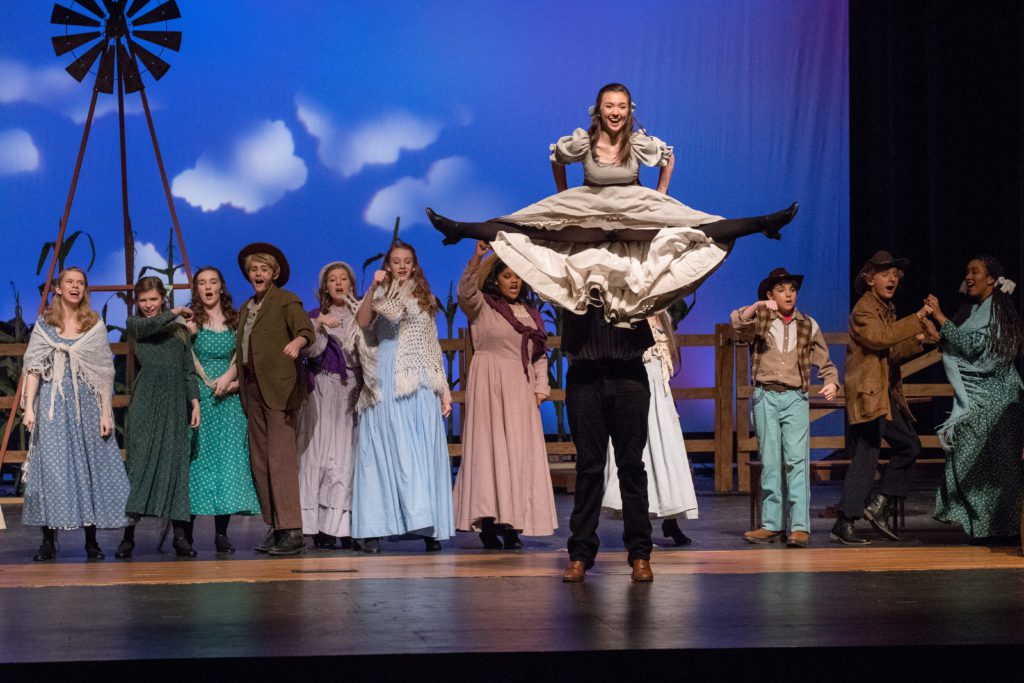
[NIKON D5, 120.0-300.0 mm f/2.8, Mode = Aperture Priority, ISO 18000, 1/500, ƒ/5, (35mm = 155)]
In 2017 I photographed my daughter’s high school production of Oklahoma and was shooting the live performance. Here I froze the peak moment when a dancer was doing a split. This was not possible in 1982.
Until the Nikon D3 was introduced in 2008, the maximum ISO sensitivity setting that you might be able to shoot at was either 1600 or 3200 (depending on the model), and even then, not remarkably confidently.
I jumped from shooting ISO 1600 to ISO 12800. This was three full stops of ISO.
Today I have the Nikon D5 & Nikon Z6 and have had to use ISO 51200 or higher to get photos. Before now, they were not possible without a flash.
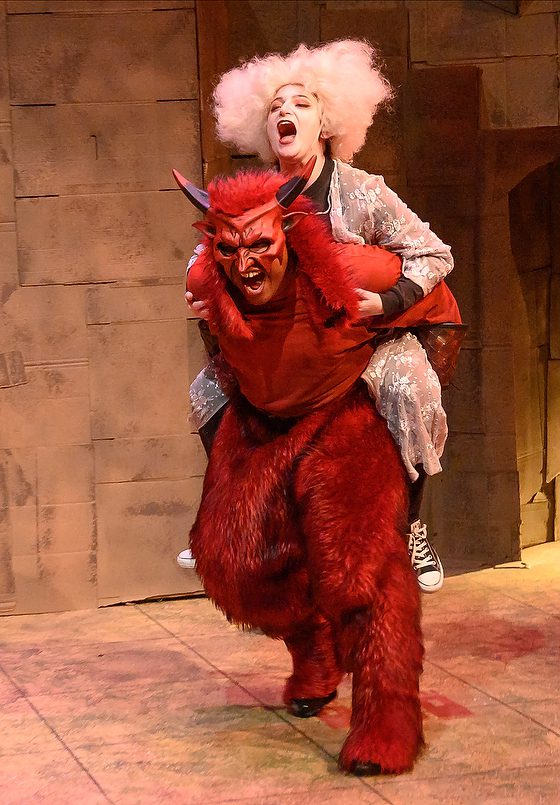
Nan Melville, who shoots for The Juilliard School performances, says, “shooting in real-time in rehearsal is important – Instead of stopping and having the actors pose. I never do that.” [Nan Melville’s performing arts photos]
Alan Goldstein says, “I’ve photographed many performances and preferred dress rehearsal because I could move around the theatre. However, I have also photographed live performances from the rear of the theatre. Nothing was staged for me, and I liked the spontaneity.” [Alan Goldstein’s work]
Jeff Widner said he shot these of the broadway show “Network” during the performance. Go here to see those photos.
Michelle Heimlich says, “I know Ball State University that I shot for 15+ years ago with the move to digital photography, has gone to all real-time photography instead of dress rehearsals.”
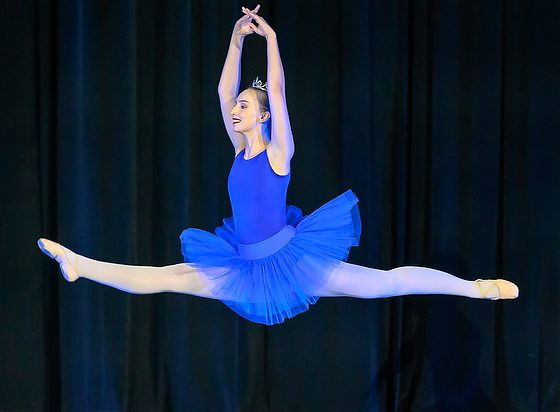
Now when it comes to dancing, that takes things to a whole new level. If it were born in 1982 with my Nikon FM2, this photo would have been 1/2-second-long at ISO 1250 and ƒ/5.6. Also, that wouldn’t be in color. Back then, ISO for Color was about ISO 320. Your shutter speed would have been about 2 seconds.
Nan Melville says,
“With dance, I find it almost impossible to pose pix and can generally tell when I see a photo set up. Sometimes the set-up Photos with the elaborate background can be compelling, like the posters for ballet and opera, when done on a grand scale, if you know what I mean.
That is, with a setting and lights organized for a particular effect. However, these must be good, or I think they are fake.
A dancer recently asked me to take pictures during a performance because all the rehearsal pictures were so bad, and the absolute intensity did not show.”
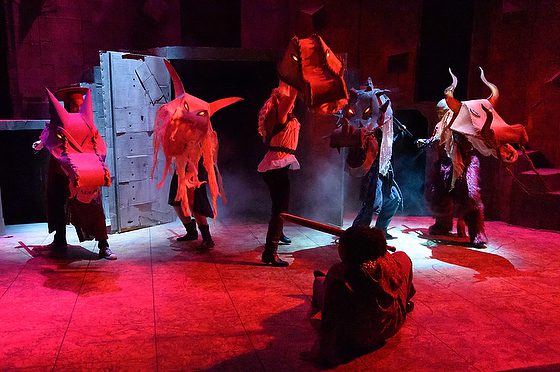
Only recently has it been technically possible to capture the scene above that I did recently at the dress rehearsal for “She Kills Monsters.” ISO 51200 made this possible.
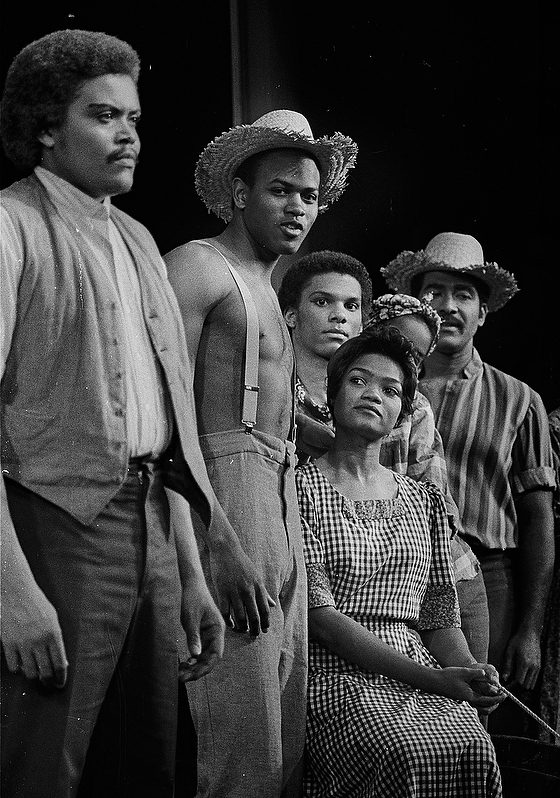
As you can see, the actors don’t have the emotion on their faces as they would have had during the actual scene. Stopping and posing make for poor aesthetic images.
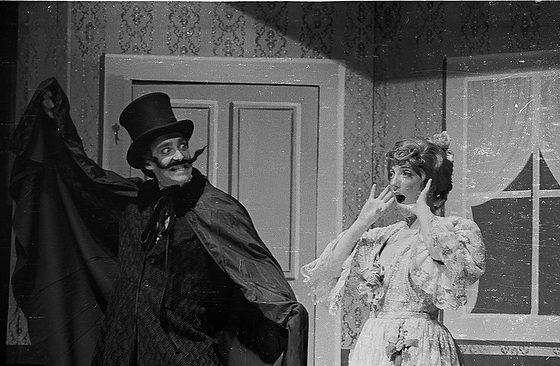
It makes the actors look horrible. What I like about capturing a rehearsal and performance versus a photo call where we stop the scene for photos is that the emotions of the commission are lost.
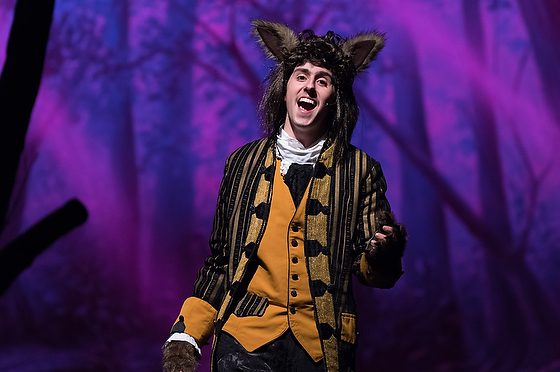
Getting high school performers to look accurate in posed photos is nearly impossible. This is why I love shots like this of high school performance.
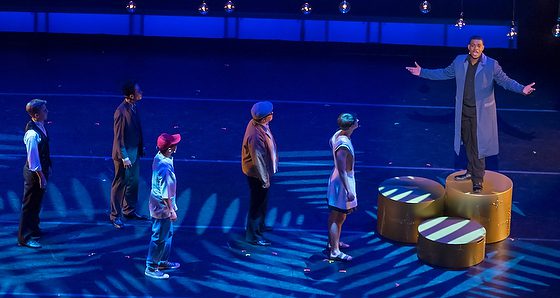
“Photography is not like painting,” Henry Cartier-Bresson told the Washington Post in 1957. “There is a creative fraction of a second when taking a picture. Your eye must see a composition or an expression that life offers you, and you must know with intuition when to click the camera. That is the moment the photographer is creative,” he said. “Oop! The Moment! Once you miss it, it is gone forever.”
“To me, photography is the simultaneous recognition, in a fraction of a second, of the significance of an event and of a precise organization of forms which give that event its proper expression.”
Henry Cartier-Bresson
When theatre is done at its best, the storytelling becomes real and makes the audience feel. Their bodies will react to those scenes. Your body wants to run when the scary parts of the story are told and cries during the sad moment. You laugh at the times of humor.
Photography of the theatre should do the same. It should capture those peak moments and bring the audience into the moment. We kill the moment when we stop actors and tell them to hold a pose.
The TV Show “Lie to me!” is inspired by the work of Paul Ekman, the world’s foremost expert on facial expressions and a professor emeritus of psychology at the University of California San Francisco School of Medicine.
The research is based on the fact that people have micro-expressions that happen only at about 1/30 of a second. I know that many seasoned photographers can anticipate these types of moments. When you freeze actors, you will never capture these micro-expressions, which bring a level to the performance of a scene that is not possible without the actors in full performance mode.
With today’s camera, the technology allows us to capture theater and dance live, which was not possible just a few years ago. If you want to fill those seats in theaters with paying customers, the only thing that many will see that will determine if they come is the photos that promote the performance. It would help if you had the best possible “Moment” to enable it.
Hire a photographer known for capturing the “Moment” with the gear to photograph in low light to get the best possible images to promote your performance.

